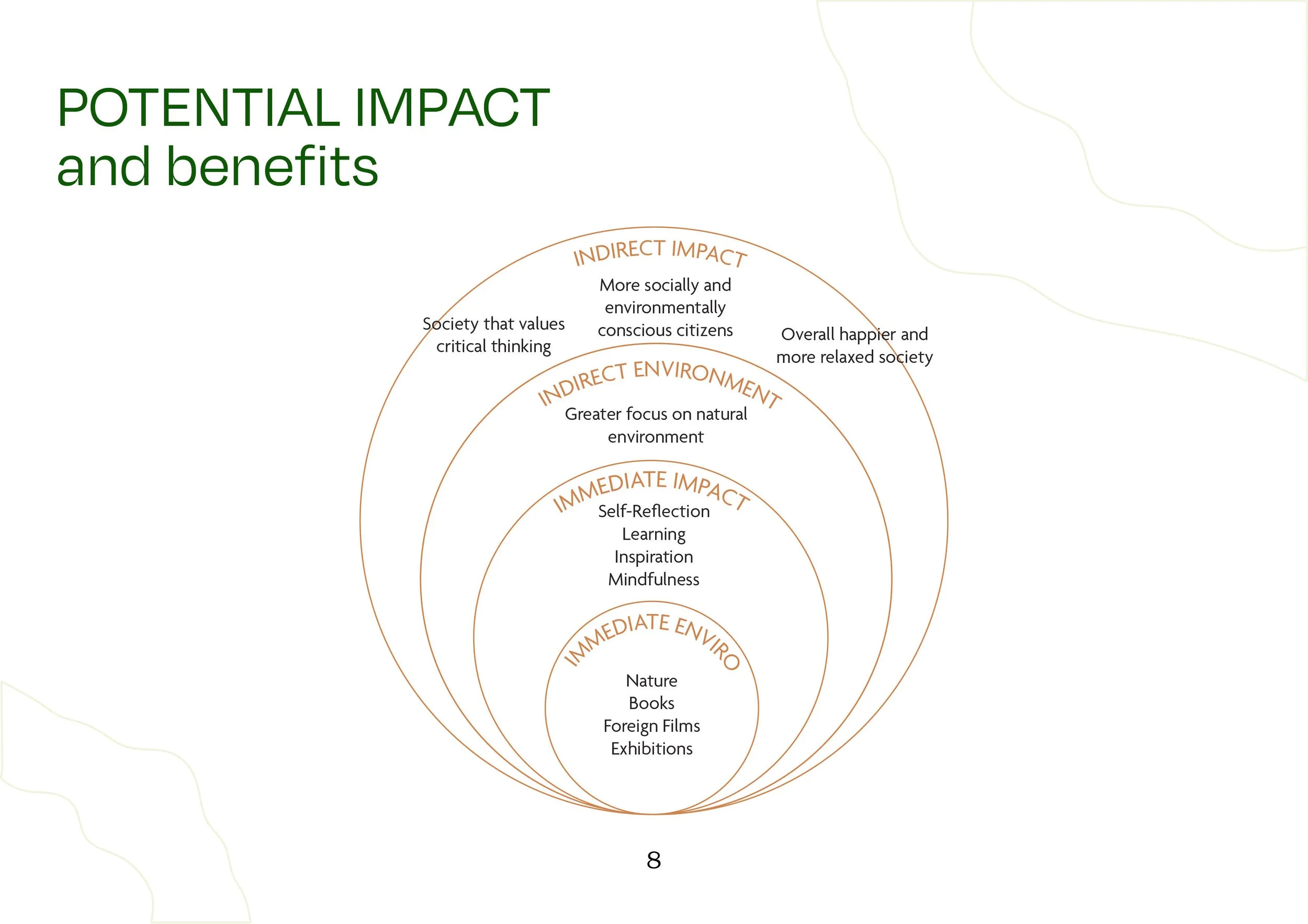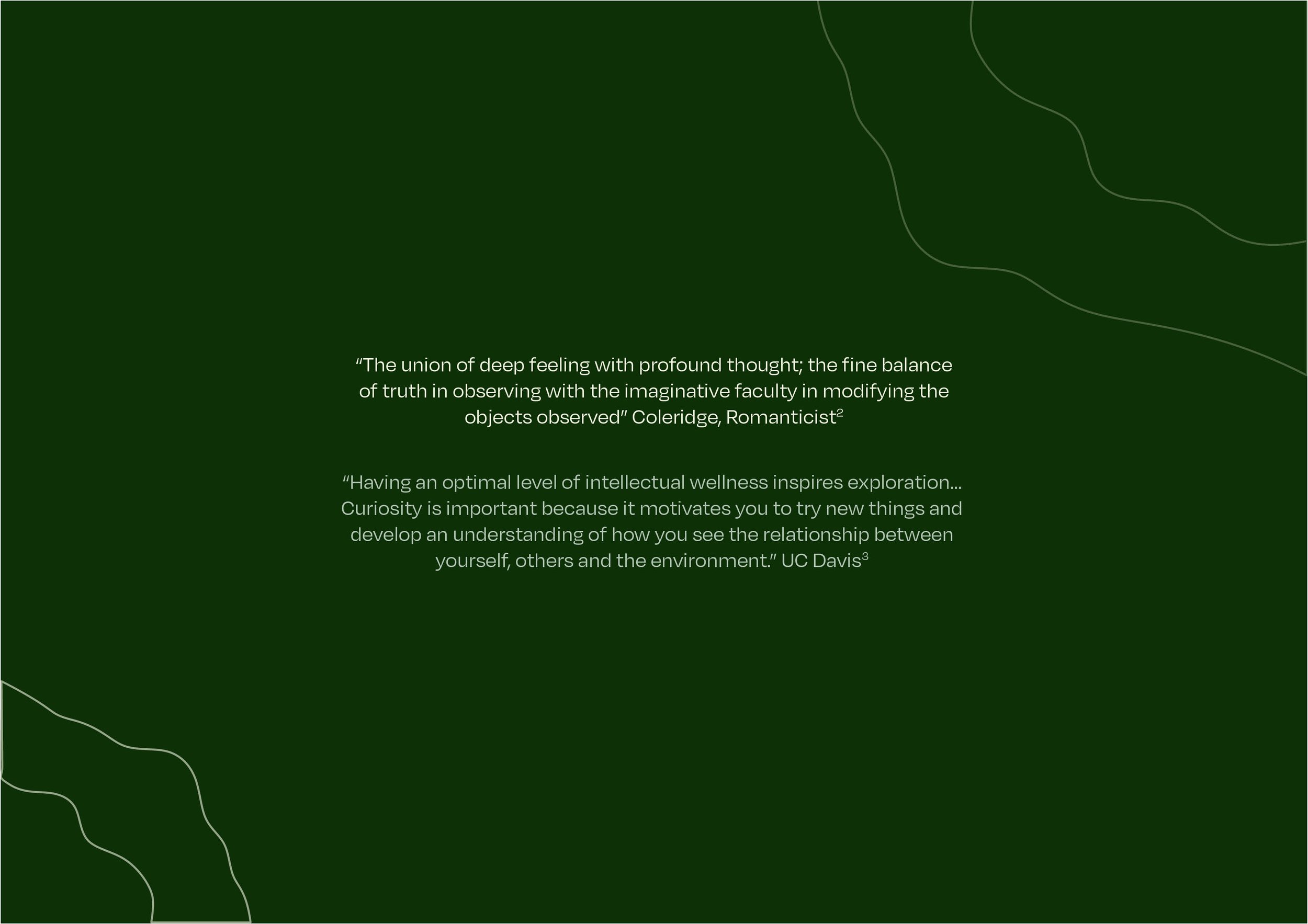Design Project
The Conservatory: Centre for Intellectual Wellness
The Problem
Intellectual wellness is a vital but often overlooked aspect of overall wellbeing, as defined in the eight dimensions of wellness. After leaving formalised education, many adults lose access to environments that support continued learning and curiosity. This can lead to reduced critical thinking, creativity, and personal fulfilment. Few systems exist to support intellectual growth in adult life.
My Contributions
I developed a spatial concept designed to support adults of all ages in reflecting, learning, and nurturing their sense of self to promote intellectual wellbeing. The project explores how physical environments can foster a deeper connection to one’s intellectual self and, by extension, the other dimensions of wellness. The spatial design acts as a conceptual tool for exploration, rather than a prescriptive or built solution.









Background
While intellectual wellness is widely recognised as one of the eight dimensions of wellbeing, it remains underexplored in both public discourse and design practice. Many adults struggle to find space or time to engage meaningfully with their curiosity, creativity, or critical thinking outside of formal education systems. With modern life increasingly shaped by overstimulation, digital fatigue, and social isolation, there is a growing need for environments that encourage introspection and lifelong learning. The Conservatory responds to this gap by considering how spatial design can reframe solitude as restorative, promote self-directed discovery, and support intellectual growth through slow, intentional engagement with the world.
Research & Approach
To understand how intellectual wellness could be meaningfully supported, I began by exploring academic frameworks that define and promote it, particularly those used in university settings where reflection, curiosity, and creativity are actively encouraged. As there is limited research dedicated specifically to intellectual wellness and its full scope, I expanded my review to include literature from health, education, psychology, and design. I focused on themes such as lifelong learning, cognitive engagement, digital fatigue, and the role of rest in supporting mental clarity and resilience.
From this, I found several key factors essential to supporting intellectual wellness. Lifelong learning is fundamental, with evidence showing it improves neuroplasticity, fosters a sense of purpose, and enhances personal fulfilment throughout adulthood. Addressing loneliness and isolation is also important, as stronger cognitive function supports social connections and reduces risks associated with cognitive decline. In contrast, solitude can be restorative, stimulate creativity, and encourage self-reflection and personal growth. Finally, active and mindful engagement is vital as a counter to the negative effects of digital overstimulation and can help sustain intellectual curiosity over time. My design response would have to address these areas.
Alongside this, I drew a parallel between contemporary ideas of intellectual wellness and the values of the Romantic movement. Although not typically referenced in academic literature, Romanticism offered a rich conceptual lens through its emphasis on imagination, emotional depth, connection to nature, and self-directed learning. I found these principles closely aligned with the qualities that support intellectual wellbeing today. Using this historical framework helped me bridge academic research with more personal and creative ways of understanding the problem space, offering a deeper, more theoretical approach for the design response.
Design Response
Drawing on the principles identified in the research and inspired by the Romantic movement, The Conservatory’s design centres on creating flexible, open spaces that support intellectual wellness through curiosity, reflection, and connection to nature.
The spatial layout integrates a variety of dedicated zones and resources that encourage exploration and self-directed learning. These include areas for rotating exhibitions and diverse media such as film and literature, providing users with multiple avenues to engage with new ideas at their own pace. Complementing these are provisions for creative expression and quiet reflection, such as communal journaling materials and comfortable seating.
To support restoration and personal grounding, the design encourages moving freely between indoor spaces and the surrounding gardens. Borrowable mats offer a way for people to comfortably use both the indoor and outdoor areas, giving space for moments of pause and reflection. The permeability of the site promotes fluid transitions, allowing users to navigate the space according to their curiosity and needs rather than predetermined routes.
This open and flexible approach avoids rigid programming, giving people the freedom to explore and engage on their own terms. It supports intellectual wellness as an ongoing, personal practice where imagination, learning, and rest come together naturally.




